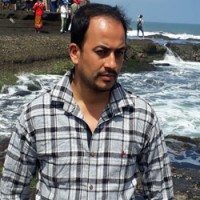About Best of Bhutan Tour Cost | 6 Nights 7 Days Bhutan Tour
The Best of Bhutan Tour 6 Nights 7 Days offered by Himalayan Asia Treks is one of the most popular and highly rated Bhutan tour packages that takes travelers on an unforgettable journey through the spiritual and cultural heart of the Land of the Thunder Dragon. This perfectly crafted itinerary covers Paro, Thimphu, Punakha, and Gangtey (Phobjikha Valley) — four of Bhutan’s most iconic destinations — offering a harmonious blend of cultural exploration, scenic landscapes, and spiritual experiences.
Best of Bhutan Tour Overview
The 6 Nights 7 Days Bhutan Tour begins in Paro, home to the legendary Taktsang Monastery (Tiger’s Nest), perched dramatically on a cliffside. From Paro, the journey continues to Thimphu, the vibrant capital city known for its unique blend of modernity and tradition. Explore landmarks such as Buddha Dordenma, Tashichho Dzong, and the National Memorial Chorten, where you’ll experience Bhutan’s deep-rooted Buddhist culture.
Next, travel to the beautiful valley of Punakha, once the capital of Bhutan, famous for the majestic Punakha Dzong, built at the confluence of the Pho Chu and Mo Chu rivers. Visit the Chimi Lhakhang, the Temple of Fertility, before heading to Gangtey (Phobjikha Valley), a pristine glacial valley renowned for its scenic beauty and the winter home of the rare black-necked cranes. The tour concludes back in Paro with an unforgettable hike to Tiger’s Nest Monastery, one of Bhutan’s most sacred and photogenic landmarks.
Best of Bhutan Tour Cost
The Best of Bhutan Tour cost depends on travel season, group size, and accommodation type. Generally, the 6 Nights 7 Days Bhutan Tour package cost USD 1,800
inclusive of:
- 3-star standard hotels (upgradable to luxury on request)
- Daily meals (Breakfast, Lunch, Dinner)
- Licensed Bhutanese guide
- Entrance fees to monuments and monasteries
- Transportation with a private driver
- Sustainable Development Fee (SDF) and Bhutan visa assistance
Luxury Bhutan Tour packages are also available for travelers seeking premium accommodations and exclusive experiences.
Highlights of Best of Bhutan Tour (6 Nights 7 Days)
- Visit the breathtaking Tiger’s Nest Monastery (Taktsang) in Paro
- Explore the capital city Thimphu – Buddha Point, Tashichho Dzong & Memorial Chorten
- Discover the serene Punakha Dzong and the Chimi Lhakhang temple
- Visit Gangtey Monastery and explore the stunning Phobjikha Valley
- Scenic drives through Himalayan landscapes and lush valleys
- Authentic Bhutanese cuisine and cultural encounters
Best Time to Visit Bhutan
The best time to visit Bhutan is during spring (March–May) and autumn (September–November), when the weather is pleasant, skies are clear, and cultural festivals like Paro Tsechu and Thimphu Tsechu are celebrated.
Why Choose Himalayan Asia Treks?
Himalayan Asia Treks is a trusted and government-licensed tour operator specializing in Bhutan, Nepal, and Tibet tours. With experienced local guides, comfortable accommodations, and personalized services, we ensure your Bhutan trip becomes a once-in-a-lifetime journey filled with joy, culture, and adventure.
How to Reach Bhutan
Most international travelers enter Bhutan via Paro International Airport. Flights to Paro are available from Kathmandu (Nepal), Delhi, Bangkok, and Singapore. You can also travel overland via Phuentsholing from India.
Himalayan Asia Treks can assist in booking your Druk Air or Bhutan Airlines tickets and arranging all necessary travel documents.
Conclusion
The Best of Bhutan Tour by Himalayan Asia Treks is a magical journey through the heart of Bhutan — from the historic monasteries of Paro to the cultural landmarks of Thimphu, the royal heritage of Punakha, and the serene beauty of Gangtey. This all-inclusive Bhutan travel package offers incredible value for travelers seeking culture, peace, and nature in one trip.
If you are searching for the Best of Bhutan Tour Cost, or want to explore Bhutan’s highlights with a trusted local expert, book your Bhutan adventure with Himalayan Asia Treks today and experience the happiness kingdom like never before.

